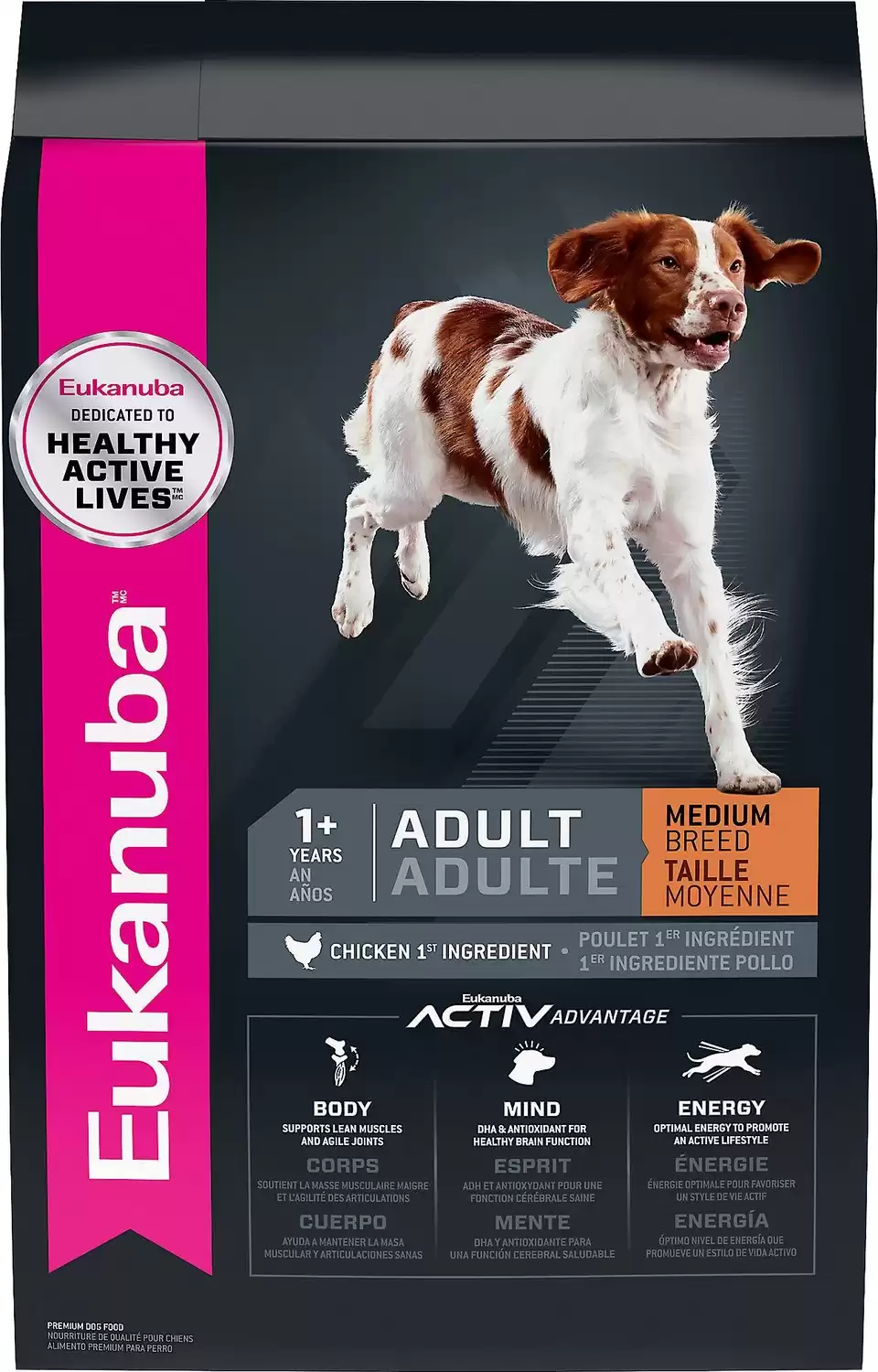Thai Ridgeback
Canis lupus
In their native Thailand, Thai Ridgebacks were used to hunt cobras.
Advertisement
Thai Ridgeback Scientific Classification
- Kingdom
- Animalia
- Phylum
- Chordata
- Class
- Mammalia
- Order
- Carnivora
- Family
- Canidae
- Genus
- Canis
- Scientific Name
- Canis lupus
Read our Complete Guide to Classification of Animals.
Thai Ridgeback Conservation Status
Thai Ridgeback Facts
- Fun Fact
- In their native Thailand, Thai Ridgebacks were used to hunt cobras.
- Temperament
- Intelligent, independent, protective
- Diet
- Omnivore
Thai Ridgeback as a Pet:
- General Health
- Energy Level
- Shedability
- Trainability
- Intelligence
- Tendency to Chew
- Size
- Family and kid friendliness
- Yappiness / Barking
- Low
- Separation Anxiety
- Low
- Preferred Temperature
- Warm climate
- Exercise Needs
- High
- Friendly With Other Dogs
- Poor
- Pure bred cost to own
- $1,600 to $3,000
- Dog group
- Hound
- Male weight
- 50-75 lbs
- Female weight
- 35-55 lbs
This post may contain affiliate links to our partners like Chewy, Amazon, and others. Purchasing through these helps us further the A-Z Animals mission to educate about the world's species.
View all of the Thai Ridgeback images!
In their native Thailand, Thai Ridgebacks were used to hunt cobras
Thai Ridgebacks have only been domesticated for the past 350 years or so. Before that, they were free-range dogs, roaming southeastern Asia in packs and easily identifiable by their wedge-shaped heads, pointed muzzles, erect ears, pigmented tongues, and curved tails. The breed is still incredibly rare outside of Thailand but has been recognized by the American Kennel Club (AKC) since 1997. The AKC assigns the Thai Ridgeback its Hound Group designation. Alternate names for this dog include Mah Thai Lang Ahn and Pariah Dog.
See all of our expert product reviews.
Thai Ridgebacks’ coats come in a variety of colors, including black, red, blue, fawn, and brindle. Not every Thai Ridgeback has the distinctive crest of hair running along its spine that gives the breed its name. Thai Ridgebacks are extremely intelligent and headstrong. For this reason, they’re not recommended for first-time dog owners.
3 pros and cons of owning Thai Ridgeback
| Pros! | Cons! |
|---|---|
| They’re very energetic: If you’re looking for a canine companion to accompany you on your running, hiking, and backpacking expeditions, the Thai Ridgeback may be just what you’re looking for. They make good hunting dogs as well. | They have a high prey drive: Since they survived in southeast Asia on their own for hundreds of years, it should not be surprising to discover that Thai Ridgeback have high prey drives. Training and socialization will help control this drive to some extent. Still, this is not a dog that you can count on to coexist peacefully with cats and other small animals. If they haven’t been properly trained, they can also be aggressive toward human strangers because they’re protective of those they know and love. |
| They don’t shed very much: Although Thai Ridgebacks are not entirely hypoallergenic, they shed very little. They have very short coats, and as their ancestral home in southeastern Asia is warm and humid throughout the year, they don’t grow heavy winter coats that they have to get rid of in the spring. | They’re expensive and hard to find: Thai Ridgebacks were not brought to the U.S. until 1994, and there aren’t very many breeders. Puppies can typically be purchased for between $1,600 and $3,000, but you may have to add the cost of an air flight and hotel stay to that price if you have to travel a long distance to find a breeder. |
| They’re good watchdogs: With proper training and socialization, Thai Ridgebacks make excellent watchdogs. They’re naturally protective of the humans they love. They don’t bark a lot, either. | They can be difficult to train: While Thai Ridgebacks are extremely intelligent dogs, they’re very independent. Training this breed can be a challenge. You’ll need to start obedience training as soon as you get your puppy home. Consistent, patient training is the key to socializing this dog because Thai Ridgebacks like to push the boundaries. |

Thai Ridgeback playing with a toy.
©iStock.com/keattikorn
Thai Ridgeback Size and Weight
For medium-sized dogs, Thai Ridgebacks are extremely muscular and strong. Adult males are significantly larger than adult females. Males will grow to a height of 22 to 24 inches and a weight between 50 and 75 pounds, while females will grow to a height of 20 to 22 inches and a weight between 35 to 55 pounds. Thai Ridgeback puppies typically achieve their full growth by one year of age.
| Height (Male) | 22-24” Tall |
| Height (Female) | 20-22” Tall |
| Weight (male) | 50-75 lbs., fully grown |
| Weight (female) | 35 to 55 lbs., fully grown |
Thai Ridgeback Common Health Issues
A healthy Thai Ridgeback can live to be 12 or 13 years old. Since they’re not very well known in the U.S., there’s not much inbreeding, which means that on the whole, Thai Ridgebacks are hearty, healthy canines that don’t suffer from a lot of congenital diseases.
Health and Entertainment for your Thai Ridgeback
See all of our expert product reviews.
One hereditary health condition that’s found in a few Thai Ridgebacks is Dermoid Sinus, an abnormal fistula that’s prone to infection. Thai Ridgebacks may develop hip dysplasia and elbow dysplasia, too, particularly if they’re overfed. Additionally, these dogs are more prone than most to developing dental disease, so good oral hygiene practices are a must.
- Dermoid sinus
- Hip dysplasia
- Elbow dysplasia
- Dental disease
Thai Ridgeback Temperament
Thai Ridgebacks have very independent personalities. Their temperaments are headstrong; they like getting their own way, and without firm, consistent training, they are likely to display aggressive behavior toward everyone outside their human family. Though they are loyal to every member of their human family, they are one-person canines at heart, so they often develop a particularly close attachment to the human who trained them.
Another one of their distinctive character traits is their fondness for escaping and cruising the neighborhood on their own. Don’t make the mistake of assuming a wall will keep them in your backyard. Thai Ridgebacks are among the best jumpers in the canine world and can easily clear a five-foot fence without so much as a running start.
How To Take Care of Thai Ridgebacks
Thai Ridgebacks’ unique appearance and personalities present some challenges to owners. If you want to make sure your dog lives a happy, fulfilling life, you’ll need to pay special attention to your dog’s diet, grooming, and exercise needs, and you’ll have to take the time to train him or her properly.
The Best Dog Food for Thai Ridgebacks
Adult dogs should be fed two to four cups of high-quality kibble a day. Opt for dry kibble dog food to maintain proper oral health. You can supplement your dog’s diet with certain human foods like cottage cheese, eggs, fruits, and vegetables. Never let your dog beg at the table, however, because this can lead to obesity, and you’ll discover that it’s a very hard habit to break your dog of.
These dogs, one year or older, only need to be fed once a day. A puppy who’s less than three months old should be fed four times a day. Puppies between three and six months should be fed three times a day while puppies between the ages of six months and a year should be fed twice a day.
At A-Z Animals, our favorite option as the best dog food for Thai Ridgebacks is Eukanuba Adult Medium Breed Dry Dog Food.
For a breed that can develop dental health issues, this is the perfect kibble. It has a hard, crunchy texture and pieces with a clever shape that controls plaque, tartar, and food residue accumulation. Made with real chicken, this food delivers natural glucosamine from animal protein that protects your Thai Ridgeback’s joints from dysplasia.
Try out Eukanuba Medium Breed dog food, available on Chewy or Amazon.
- Adult medium breed dry dog food formulated with complete and balanced nutrition for medium breed dogs over 12 months old and weighing between 24-54 lb.
- Promotes lean muscle development and joint health in active adult dogs with a combination of animal protein, glucosamine, and chondroitin sulfate.
- Helps keep dogs sharp and supports healthy brain function with DHA and vitamin E.
- Fuels an active lifestyle with optimal levels of fats and carbohydrates.
- High-quality chicken is the first ingredient for protein that powers his day.
Thai Ridgeback Maintenance And Grooming
These dogs don’t require a lot of grooming. They don’t have an undercoat, which means they don’t have dander, so while they’re not completely hypoallergenic, many people with allergies to dog dander are able to tolerate them. Their short, straight coats only need brushing a couple of times each week to remove loose hair that would otherwise get on your furniture and carpets. Use a rubber curry comb.
You won’t need to bathe your dog very often, either. These dogs have strong, fast-growing nails, however, which do need regular trimming to keep from splitting and tearing. Brush their teeth regularly to prevent any buildup of tartar that could lead to gum infections and tooth loss.
Thai Ridgeback Training
Because of their independent natures, these dogs can be very difficult to train. Even the most experienced dog handlers often find these canines difficult to work with. Consistent, repetitive training that combines firm correction with positive reinforcement in the form of treats produces the best results.
You’ll need to begin acclimating your puppy to other people and pets just as soon as he or she has received all vaccinations. These dogs are naturally mistrustful of strangers, but early socialization can help them grow more comfortable in unfamiliar situations.
Thai Ridgeback Exercise
These are extremely athletic dogs who require a lot of exercise. Without adequate exercise, these dogs are liable to become destructive. Anticipate at least two brisk half-hour walks a day at the bare minimum although more exercise is preferable. These dogs are excellent swimmers, hikers, and runners. Because of their high prey drive and innate distrust of strangers, this breed does not do well in group play situations with other dogs.
One of the reasons the dog was domesticated in its native Thailand was to pull small carts, so he or she is exceptionally well suited for drafting trials as well as for other canine sports such as agility, rally, lure coursing, and obedience. These dogs also like in-door games like hide-and-seek.
Thai Ridgeback Puppies
These dogs are still quite rare in the U.S., so it’s likely you’re going to have to search before you locate a reputable breeder. Plan on adopting your puppy as soon as it’s been weaned because it’s essential to begin socializing puppies as soon as possible.

©otsphoto/Shutterstock.com
Thai Ridgebacks And Children
A properly socialized dog makes a wonderful pet for a family with older children, but puppies who haven’t been trained are likely to be too rough and tumble for families with younger children.
Dogs similar to the Thai Ridgeback
Cane Corsos, Australian Cattle Dogs, and Rottweilers all have traits in common with these dogs.
- Australian Cattle Dogs: One of the Thai Ridgeback’s most distinctive physical features is its upright, pointed ears. The Australian Cattle Dog shares this trait as well. One reason for this may be that Australian Cattle Dogs are descendants of Australia’s very own pariah dog, the dingo. In the U.S., Australian Cattle Dogs are more commonly known as red or blue heelers.
- Cane Corsos: Like Thai Ridgebacks, Cane Corsos are highly intelligent and extremely independent. Neither breed is recommended for inexperienced dog owners. Like Thai Ridgebacks, Cane Corsos are highly protective of their human families and make excellent watchdogs.
- Rottweilers: Rottweilers were originally bred in Germany to help farmers drive cattle to market, but in the 19th century, they also began pulling carts for butchers. Thai Ridgebacks pulled carts in their native Thailand.
Thai Ridgebacks vs Rhodesian Ridgebacks
While Thai Ridgebacks and Rhodesian Ridgebacks both have a dorsal crest of hair that follows their backbone down to their tail and rises up when they get excited or agitated, they don’t otherwise look that much alike. Rhodesian Ridgebacks are physically larger and heavier, their ears flop and their personalities are gentler and more affectionate.
Rhodesian Ridgebacks hail from the southern portions of Africa, which are some 6,000 miles distant from Thailand. Genetic studies have proven, however, that the two breeds are distant cousins, descended from a common ancestor who lived about a thousand years ago.
Popular Names for Thai Ridgebacks
Popular names include:
- Lucky
- Sushi
- Angpao
- Money
- Dollar
- Euro
Thai Ridgeback FAQs (Frequently Asked Questions)
How much do Thai Ridgebacks cost to own?
Depending upon their breeding stock, Thai Ridgeback puppies typically bring a price between $1,600 and $3,000. If the breeder’s price is much lower than this, it’s likely that the puppy is missing the distinctive ridge that gives the breed its name.
Although Thai Ridgebacks are a rare breed, adult dogs turn up for adoption at rescue shelters more often than you might think. This is because Thai Ridgebacks are excellent escape artists, and the urge to roam is so strong in them that they will even run away from homes where they are happy. Rescue missions often misidentify Thai Ridgebacks as pit bull mixes. If you file adoption papers at a dog rescue, you may be able to get a Thai Ridgeback for only a few hundred dollars.
Adoption incidentals such as vaccinations, microchipping, neutering or spaying, bedding, toys, food, and crates will set you back another $1,000 to $1,500 during that first year. You almost certainly will require the services of a professional dog trainer, and that will cost an additional $1,200. Thereafter, you can expect to spend approximately $2,000 a year on food, vet bills, and training.
Are Thai Ridgebacks good with kids?
Thai Ridgebacks that have been well trained are good with children older than 10, but they should not be trusted around younger children.
How long do Thai Ridgebacks live?
Healthy Thai Ridgebacks can live as long as 12 or 13 years.
What breeds make a Thai ridgeback?
Thai Ridgebacks are purebred dogs, not hybrid dogs.
Are Thai Ridgebacks rare?
Thai Ridgebacks are extremely rare outside of Thailand.
Where do Rhodesian Ridgebacks originate from?
Rhodesian Ridgebacks originated in the southern portions of Africa.
Are Thai Ridgebacks related to Rhodesian Ridgebacks?
Geneticists think that Thai Ridgebacks and Rhodesian Ridgebacks share a common ancestor.
What are the key differences between the Thai Ridgeback and the Rhodesian Ridgeback?
The key differences between the Thai Ridgeback and the Rhodesian Ridgeback are breed origin, appearance, size, hair type and color, and temperament.
Thank you for reading! Have some feedback for us? Contact the AZ Animals editorial team.
Sources
- Merriam Webster Dictionary, Available here: https://www.merriam-webster.com/dictionary/pariah%20dog
- Dogtime, Available here: https://dogtime.com/dog-breeds/thai-ridgeback#/slide/1
- American Kennel Club, Available here: https://www.akc.org/dog-breeds/thai-ridgeback/
- Vet Street, Available here: http://www.vetstreet.com/dogs/thai-ridgeback
- The Happy Puppy Site, Available here: https://thehappypuppysite.com/thai-ridgeback/
- Pet ID Register, Available here: https://petidregister.com/thai-ridgeback/can-thai-ridgeback-be-guard-dogs
- The Happy Puppy Site, Available here: https://thehappypuppysite.com/thai-ridgeback/
- American Thai Ridgeback Association, Available here: http://www.thaidog.org/faq.html
- Wamiz, Available here: https://wamiz.co.uk/dog/breeds/298/thai-ridgeback-dog
- Dog Breed List, Available here: https://www.dogbreedslist.info/all-dog-breeds/thai-ridgeback.html
- K9 Web, Available here: https://www.k9web.com/breeds/ridgeback/
- Wag, Available here: https://wagwalking.com/breed/thai-ridgeback
- Aubrey Animal Medical Center, Available here: https://aubreyamc.com/canine/thai-ridgeback/
- Petful, Available here: https://www.petful.com/breeds/thai-ridgebacks/
- Dog Zone, Available here: https://www.dogzone.com/breeds/thai-ridgeback/
- Wisdom Panel, Available here: https://www.wisdompanel.com/en-us/dog-breeds/thai-ridgeback
- Pet Care Tips, Available here: https://animalcaretip.com/how-to-care-for-your-thai-ridgeback/
- Pet Guide, Available here: https://www.petguide.com/breeds/dog/thai-ridgeback/#


















